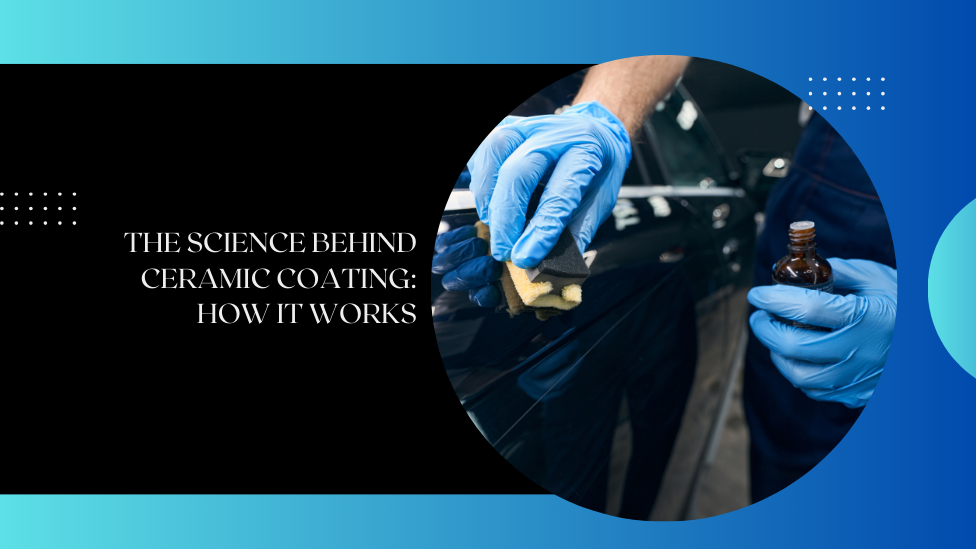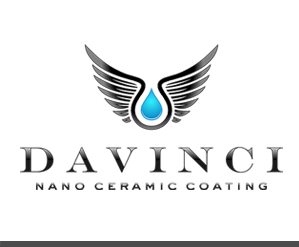When it comes to protecting your car’s paintwork, few innovations have revolutionized the automotive detailing industry like ceramic coating. This cutting-edge solution doesn’t just make your vehicle shine—it provides long-lasting protection from the elements, scratches, and contaminants. But how does it actually work? What’s the science behind its seemingly magical results? In this article, we break down the principles behind ceramic coatings, the chemistry involved, and what makes this advanced protective layer a must-have for car enthusiasts and professionals alike.
What Is Ceramic Coating?
At its core, ceramic coating is a liquid polymer applied to the exterior of a vehicle. Once cured, it chemically bonds with the factory paint, creating a protective layer that is both durable and hydrophobic. Unlike wax or sealants that sit on top of the paint and wear off over time, ceramic coatings become a semi-permanent or even permanent part of the vehicle’s exterior, depending on the formulation.
The Role of Silicon Dioxide (SiO₂)
The active ingredient in most high-quality ceramic coatings is silicon dioxide (SiO₂). This compound, commonly found in nature as quartz or sand, is highly resistant to heat, chemicals, and UV rays. When applied as a coating, SiO₂ forms a hard, glass-like shell that shields the paint underneath. In higher concentrations, typically above 80%, SiO₂ creates a tougher and more resilient layer.
The process begins when the coating is applied to the paint surface. The liquid polymer contains solvents and carriers that allow the SiO₂ particles to spread and penetrate microscopically into the clear coat. As it cures, the solvents evaporate, and the particles cross-link to form a tightly bonded structure that is resistant to degradation.
Hydrophobic Properties and Self-Cleaning Effects
One of the most talked-about features of ceramic coatings is their hydrophobicity, or water-repelling ability. This is achieved through surface tension manipulation. When the ceramic coating forms its dense network, it creates a surface that water molecules cannot easily adhere to. Instead of forming flat pools, water beads up and rolls off the surface, taking dirt and contaminants with it—a phenomenon often referred to as the “self-cleaning effect.”
This property is not just for visual appeal. By reducing the adhesion of water and dirt, ceramic coatings significantly lower the chances of water spots, mineral deposits, and staining. Your vehicle stays cleaner longer, and routine washing becomes quicker and easier.
Chemical Resistance and UV Protection
Paint damage doesn’t just come from road grime. Harmful environmental factors like acidic bird droppings, bug splatter, tree sap, and UV rays can oxidize and degrade a car’s finish over time. A ceramic coating acts as a chemical shield, making it harder for these substances to penetrate and react with the paint.
Furthermore, UV protection is a major benefit. The SiO₂ layer reflects ultraviolet light, preventing oxidation and fading. This is especially important for cars parked outside or in regions with intense sunlight. With ceramic coating, your vehicle retains its factory-fresh look for much longer.
Scratch Resistance – A Closer Look
While it’s a myth that ceramic coatings make cars completely scratch-proof, they do offer a degree of scratch resistance. The hardened layer created during the curing process can protect against minor abrasions, such as those caused by improper washing or dust particles. However, it won’t stop deep scratches or dents caused by keys, accidents, or vandalism.
It’s important to note that the level of scratch resistance depends on the hardness of the coating, often measured using the pencil hardness scale. Premium products typically rate at 9H, the highest on the scale, indicating that they can resist scratches from materials with lesser hardness.
Bonding and Curing Process
Ceramic coatings are not merely painted on and left to dry. The bonding process is crucial to their performance. Once the coating is applied, it requires time to cure—usually 24 to 48 hours in controlled environments. During this period, the polymer molecules cross-link, creating a uniform matrix that fuses with the paint surface. Some professional-grade coatings may require infrared lamps to accelerate and optimize this process.
This chemical bonding is what gives ceramic coatings their longevity. Unlike waxes that degrade within months, a properly applied ceramic coating can last years with proper maintenance.
The Role of Surface Preparation
Before applying a ceramic coating, the vehicle’s surface must be meticulously cleaned and prepared. This includes washing, clay bar treatment, paint correction (to remove scratches or swirl marks), and degreasing. Any contaminants or imperfections left on the surface can prevent the coating from bonding properly, reducing its effectiveness.
This step is critical because the coating will “lock in” whatever is on the surface. If dirt or scratches are present, they will become sealed beneath the ceramic layer, diminishing the finish’s clarity and protection.
Environmental Impact and Safety
Many ceramic coatings are now formulated to be environmentally friendly, with low-VOC (Volatile Organic Compounds) content and non-toxic ingredients. These formulations reduce health risks during application and have minimal impact on the environment. Still, professional application is recommended to ensure safety and optimal results.
How Ceramic Coating Compares to Other Methods
To appreciate the science behind ceramic coatings, it’s helpful to compare them with traditional protection methods:
- Wax: Lasts a few months, offers a glossy shine but limited protection.
- Sealant: Synthetic version of wax, lasts longer but lacks durability against harsh chemicals.
- Paint Protection Film (PPF): Provides superior impact resistance but is more expensive and visible.
Ceramic coatings strike a balance between cost, protection, and appearance, offering a sleek, glossy finish with long-term benefits.
Future Developments in Nano Coatings
With advancements in nano coating technology, the future of ceramic coatings looks even brighter. New formulations are incorporating graphene, which enhances heat dissipation, conductivity, and durability. Graphene coatings can further increase resistance to water spotting, corrosion, and surface heat, taking automotive protection to the next level.
These innovations continue to push the boundaries of what’s possible, transforming simple car care into a high-tech science.
In conclusion, ceramic coating is more than just a luxury—it’s a scientifically engineered protective barrier rooted in chemistry and material science. From hydrophobic effects and UV resistance to scratch protection and enhanced durability, it offers a comprehensive solution for preserving your vehicle’s aesthetic and structural integrity. Understanding how ceramic coating works helps you appreciate not just the shine it delivers, but the science that makes it all possible.




